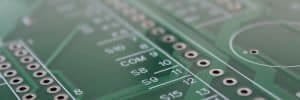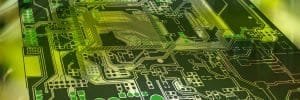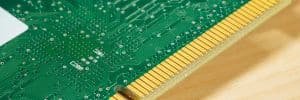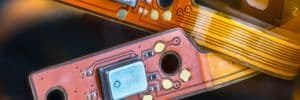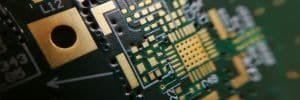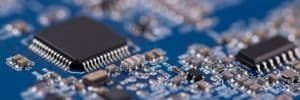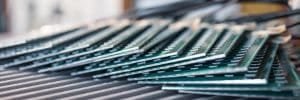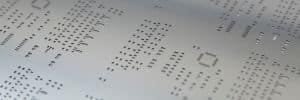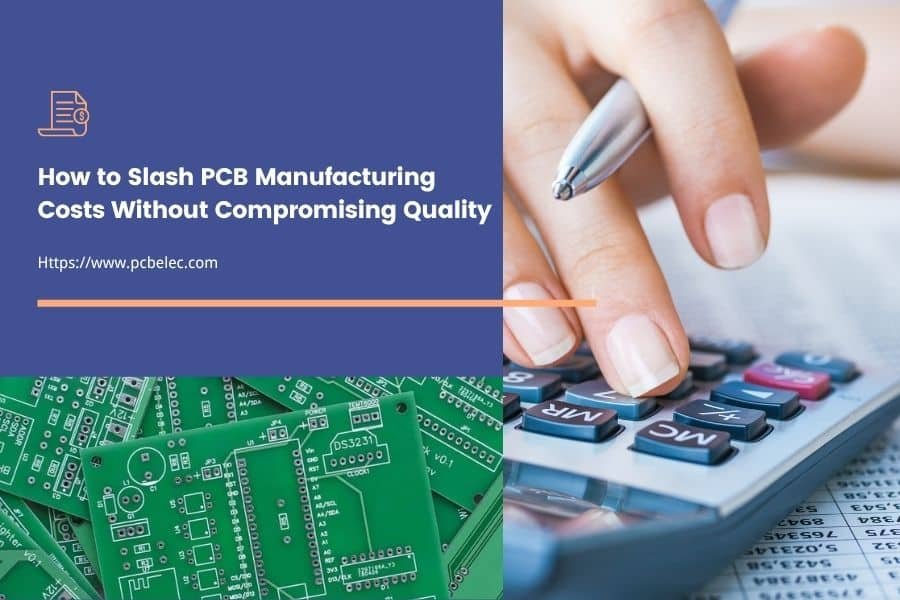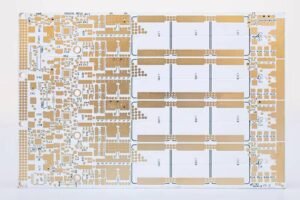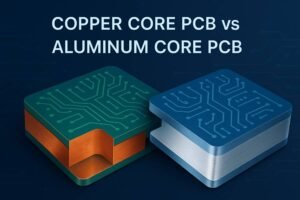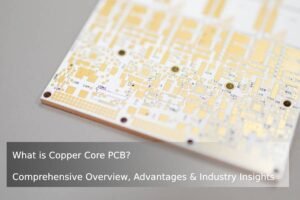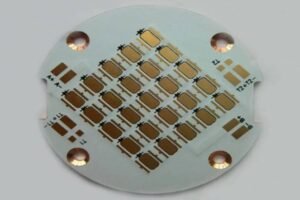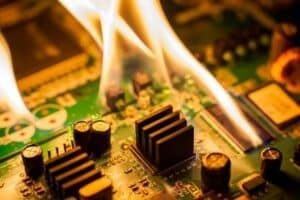Table of Contents
PCBs are the backbone of modern electronics, often accounting for 15-30% of a product’s Bill of Materials (BOM). In today’s competitive market, optimizing PCB manufacturing costs while maintaining quality is critical for startups and established companies alike. This comprehensive guide combines proven design, procurement, and strategic strategies to help you reduce PCB costs without sacrificing performance. From simplifying designs to mastering supplier negotiations, these actionable tips will boost your profitability. Ready to transform your PCB production? Let’s get started!

A PCB manufacturing worker is working
1. Simplify PCB Design to Save Big
Your design choices directly influence manufacturing complexity and costs. Simplifying your PCB design is the first step to significant savings without compromising functionality.
- Why It Matters: Complex designs with non-standard shapes, high-density interconnects (HDI), or excessive layers require advanced tooling and longer production times, increasing costs by 30-50%. Simplified designs streamline fabrication and reduce material waste.
- How to Optimize:
- Use standard board thicknesses (e.g., 1.6mm, 1.0mm, or 0.8mm) to avoid custom tooling.
- Stick to rectangular or square shapes to minimize milling expenses.
- Opt for surface-mount technology (SMT) over through-hole (THT) components to reduce drilling and assembly costs.
- Keep trace widths and spacing reasonable (e.g., 6mil instead of 4mil) to avoid precision-driven cost increases.
Minimize layer counts by consolidating power and ground planes with copper pours or optimized routing. For example, a well-designed 4-layer board can often replace a 6-layer board for non-critical applications.
Pro Tip: Use design software like Altium Designer or KiCad to simulate layouts and identify over-engineered elements before production.
2. Harness Free DFM for Cost Savings
Design for Manufacturability (DFM) inspections catch errors early, preventing costly revisions and ensuring your design aligns with manufacturing capabilities.
- Why It’s Crucial: Errors like insufficient trace widths, improper clearances, or oversized drill holes can lead to rework, delays, and added costs. Free DFM services offered by many manufacturers help optimize designs upfront.
- How to Implement:
- Submit Gerber files for a comprehensive DFM check, focusing on trace widths (min. 0.1mm for standard boards), annular ring sizes, and solder mask tolerances.
- Address feedback to simplify manufacturing processes, such as standardizing drill hole sizes to reduce tool changes.
- Collaborate with your manufacturer to balance design goals with cost-effective production methods.
- Case Study: A startup reduced rework costs by 15% by using free DFM feedback to correct via placement errors before mass production.
3. Prototype Before Mass Production
Prototyping allows you to validate your design and catch issues before committing to large-scale production, saving significant expenses.
- Benefits:
- Identifies design flaws, such as signal integrity issues or component mismatches.
- Validates performance through functional tests (e.g., In-Circuit Testing, ICT) and environmental stress tests (e.g., thermal cycling).
- Prevents costly errors in bulk runs.
Best Practices:
- Use rapid prototyping services to produce small batches (5-10 units) for testing.
- Conduct thorough functional tests, including power integrity and signal continuity.
- Iterate designs based on feedback to optimize for cost and reliability.
Pro Tip: Choose manufacturers offering low-cost prototyping to keep initial expenses minimal.
4. Choose Cost-Effective PCB Materials
Material selection impacts cost, performance, and durability. Balancing these factors is key to cost optimization without compromising quality.
Key Considerations:
- FR-4: The industry standard (~$0.5-$1/sq.ft), with a dielectric constant (Dk ≈ 4.5) and thermal stability (Tg 130-140°C) suitable for most applications.
- CEM-1: A cheaper alternative (~$0.3-$0.6/sq.ft) for single-sided boards, but less durable.
- Polyimide: Ideal for high-temperature applications (up to 260°C), but costs ~$2-$3/sq.ft.
- Evaluate tensile strength, flexibility, and dielectric properties based on your project needs.
- Cost vs. Performance:
Material
Cost (per sq.ft)
Applications
Pros
Cons
FR-4
$0.5-$1 General electronics
Cost-effective, versatile
Limited high-temp use
CEM-1
$0.3-$0.6 Single-sided PCBs
Very affordable
Lower durability
Polyimide
$2-$3 Aerospace, high-temp devices
High thermal resistance
Expensive
Recommendations: Use FR-4 for most projects unless high-frequency signals or extreme temperatures require specialized materials like Rogers or polyimide.
Related Reading
5. Leverage Panelization for Efficiency
Panelization groups multiple PCBs on a single panel, reducing material waste and spreading tooling costs, especially for high-volume or multi-spec orders.
- How It Works:
- Identical PCBs are arranged on a panel (e.g., 10 boards per 18×24” panel) to maximize material usage (up to 90%+ utilization).
- Multi-spec panelization combines different designs on one panel, ideal for small-batch or diverse orders.
- When to Use:
- High-volume orders (100+ units) benefit most from economies of scale.
- Small runs with multiple designs can leverage multi-spec panelization if supported by the manufacturer.
- Case Study: A consumer electronics firm improved material utilization from 75% to 92% through optimized panelization, reducing costs by 20%.
6. Reduce Board Complexity and Features
Complex designs with multiple layers or non-essential features increase costs. Simplifying internal structures and eliminating unnecessary elements is critical.
- Why It Helps:
- Multilayer boards (e.g., 8+ layers) increase costs by 30-50% due to advanced lamination and drilling.
- Non-critical features, like decorative slots or overly tight tolerances (±0.05mm), drive up milling and tooling expenses.
- Strategies:
- Use single- or double-sided boards for simple circuits (e.g., basic IoT devices).
- Minimize vias (e.g., use through-hole vias instead of blind/buried vias, which can double costs).
- Maintain standard tolerances (±0.1mm) and trace widths (6mil) unless precision is critical.
- Eliminate aesthetic cutouts or slots unless required for casing fit or functionality.
Example: A startup saved 25% by switching from a 6-layer to a 4-layer design for a non-critical IoT sensor, maintaining performance.
7. Select Budget-Friendly Surface Finishes
Surface finishes protect PCB pads from oxidation and enhance solderability, but costs vary significantly. Choosing the right finish balances budget and performance.
- Options Compared:
Finish Cost (per board) Pros Cons HASL $0.1-$0.3 Affordable, widely available Uneven surface for fine-pitch OSP $0.15-$0.35 Cost-effective, lead-free Limited shelf life ENIG $0.5-$1 Excellent conductivity Higher cost - Recommendations:
- Use HASL for general-purpose PCBs with standard components.
- Choose OSP for lead-free requirements or short shelf-life products.
- Reserve ENIG for high-reliability applications (e.g., medical or aerospace).
- Pro Tip: Discuss finish options with your manufacturer to match project specs and budget constraints.
Related Reading
8. Master the Art of Supplier Selection
The right PCB manufacturer can make or break your cost optimization efforts. A strategic selection process ensures quality, reliability, and savings.
Selection Criteria:
- Location: Manufacturers in Asia often offer lower costs, but factor in shipping and lead times. Local suppliers may provide faster turnaround and better communication.
- Equipment: Modern facilities with automated lines reduce errors and costs.
- Certifications: Look for ISO 9001 or IPC-A-600 compliance for quality assurance.
- Reviews: Check customer feedback for reliability and service quality.
Best Practices:
- Qualify 2-3 suppliers to ensure competitive pricing and supply security.
- Build long-term partnerships for priority scheduling and volume discounts.
- Request comprehensive quotes including engineering fees, setup charges, and testing costs, which can add 20-40% to base prices.
Pro Tip: Share annual forecasts to negotiate volume commitment discounts and better terms.
9. Leverage Volume Economics and Order Timing
Smart procurement strategies, including bulk ordering and strategic timing, can significantly reduce costs while maintaining supply chain efficiency.
- Volume Economics:
- Larger orders (e.g., 1000+ units) reduce per-unit costs by 20-30% by amortizing setup fees.
- Example: A 10-piece prototype run may cost $50/board, while a 100-piece order drops to $15/board.
- Use panelization to meet minimum order quantities (MOQs) without overstocking inventory.
- Explore multi-project ordering to combine different designs in one production lot, ideal for companies with multiple product lines.
- Order Timing:
- Plan non-urgent orders during low-demand periods (e.g., post-Chinese New Year) for better pricing and shorter lead times.
- Avoid rush orders, which carry 50-100% price premiums and may compromise quality control.
- Use blanket orders to lock in batch pricing with staggered deliveries over 3-6 months.
Case Study: A consumer electronics company shifted from monthly 500-piece orders ($8.50/board) to quarterly 2000-piece orders ($5.25/board), saving 45% through volume pricing and optimized panelization.
10. Right-Size Testing and Quality Standards
Testing and quality standards impact costs significantly (15-25% of total price). Balancing requirements with cost realities is essential.
Testing Strategies:
- Use flying probe testing for prototypes and low-volume runs (<500 units) to avoid expensive ICT fixture costs.
- Focus functional testing on critical parameters (e.g., signal integrity) rather than exhaustive checks.
- Define clear pass/fail criteria aligned with end-product needs to avoid over-testing.
- Quality Standards:
- Use IPC Class 2 for commercial products to balance cost and reliability, reserving Class 3 for mission-critical applications (e.g., aerospace), which can add 30-50% to costs.
- Avoid overly strict cosmetic inspection criteria, as non-functional defects increase rejection rates and costs.
- Pro Tip: Negotiate quality agreements with suppliers to define acceptance criteria that meet your needs without unnecessary expenses.
11. Avoid Common Cost Traps
Hidden fees and poor planning can erode savings. Proactively managing these traps ensures cost optimization.
- Manage Design Changes:
- Engineering change orders (ECOs) post-production can cost thousands in tooling and delays. Invest in thorough design reviews and prototyping to minimize ECOs.
- Consolidate multiple changes into a single revision to reduce costs.
Eliminate Hidden Fees:
- Request detailed quotes covering engineering, setup, testing, and shipping fees, which can add 20-40% to costs.
- Factor in total landed costs (including duties and freight) when comparing international suppliers.
- Example: A company saved $50,000 annually by catching impedance issues during prototyping, avoiding a costly ECO.
FAQ: Common Questions About Reducing PCB Costs
What is the cheapest PCB material?
FR-4 is the most cost-effective (~$0.5-$1/sq.ft), offering versatility for most applications.
How does panelization reduce costs?
Panelization maximizes material usage and spreads tooling costs, cutting per-unit expenses by up to 20%.
Can I lower costs without sacrificing quality?
Yes, by simplifying designs, using standard materials, and partnering with reliable manufacturers offering free DFM.
What testing method is best for low-volume runs?
Flying probe testing is ideal for prototypes and small batches, avoiding costly ICT fixtures.
Conclusion
Reducing PCB manufacturing costs requires a holistic approach, from design optimization to strategic procurement. By simplifying designs, choosing cost-effective materials, leveraging volume economics, and partnering with reliable suppliers, you can slash costs while ensuring high-quality PCBs. Avoid common pitfalls like hidden fees and rush orders to maximize savings. Start auditing your PCB designs and supplier relationships today to unlock significant cost reductions.
Ready to optimize your PCB costs? Contact us for a free DFM inspection or request a quote to start saving now!

